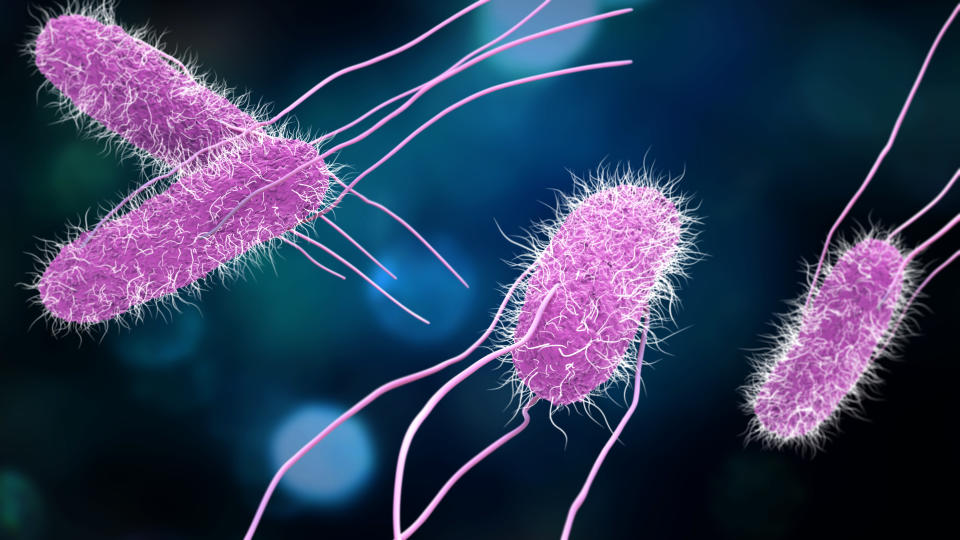CDC warns of 'alarming' strain of antibiotic-resistant Salmonella: What you need to know
An outbreak of drug-resistant Salmonella that’s being called “alarming” has infected 255 people in 32 different states, according to a report from the Centers for Disease Control and Prevention.
The infection, which led to 60 people being hospitalized and two deaths between June 2018 and March 2019, is linked to eating beef from the U.S. and soft cheese made with raw, unpasteurized milk from Mexico, per the August 23rd report.
Food poisoning from Salmonella isn’t that unusual. About 1 in 6 Americans get sick from the bacteria every year, according to the Centers for Disease Control and Prevention. “Salmonella is very common,” Yvonne Maldonado, MD, medical director of infection control and chief of pediatric infectious disease at Stanford Children’s Health, tells Yahoo Lifestyle. “It’s everywhere. It’s one of the most common causes of diarrheal disease in the world.”

For most people, the infection passes on its own, marked by diarrhea, fever, and abdominal cramps 12 to 72 hours after infection and lasting for four to seven days. But in severe cases, it can require antibiotics. “Most healthy people don’t get treated for Salmonella — most patients get over it themselves,” Brian Ahmer, PhD, a professor of microbial infection and immunity at The Ohio State College of Medicine, tells Yahoo Lifestyle. However, “for children, the elderly, and the immunocompromised, it can be very bad.”
Which is why it’s worrisome that the CDC has issued a report warning of Salmonella that’s resistant to the standard course of antibiotics.
"We are continuing to see cases occurring among patients," Ian Plumb, an epidemiologist in the CDC's Enteric Diseases Epidemiology Branch and the lead author of the report, told CNN. "The antibiotic resistance pattern of this strain is alarming because the primary oral antibiotics used to treat patients with this type of Salmonella infection may not work," he said.
The best way to deal with Salmonella is to prevent becoming infected with it in the first place. Here’s what can you do to protect yourself:
Find out which foods are most likely to have Salmonella
Many foods contain Salmonella (and you can’t tell by looking at or smelling the food). They include red meat, chicken, pork, eggs, vegetables (including sprouts), fruit, and even processed foods, such as chicken nuggets, frozen pot pies, and nut butters, according to the CDC. “You really want to stay away from unpasteurized milk,” adds Maldonado. “Pasteurized milk is just as nutritious and healthy.”
Know what to wash — and not wash
Washing your hands before and during food prep, especially when handling raw meat and eggs, is a key way to prevent the spread of Salmonella. In particular, “wash your hands between touching raw chicken and everything else,” says Maldonado.
However, the U.S. Department of Health and Human Services says you should not rinse meat, poultry, or eggs. “This can actually spread Salmonella to other foods,” according to the organization. Instead, you can pat meat dry with paper towels, promptly dispose of towels, and immediately wash your hands before touching any other food or utensils.
Keep raw meat separate from other foods
When preparing raw meat or poultry, use a separate cutting board from all of your other foods, suggests Maldonado. “If you keep other food on that cutting board, they can become contaminated,” she says. “Raw chicken should be separate from everything else.”
And if you come down with a Salmonella infection, the CDC says you should not prepare food or drinks for other people until you are diarrhea-free.
Turn up the heat and use a meat thermometer
High temperatures kill bacteria, including Salmonella, so use a meat thermometer to make sure you’re reaching that safe minimum temperature. FoodSafety.gov has a handy chart with cooking temperatures for a variety of meats and poultry, but in general, ground beef should reach 165 degrees Fahrenheit; poultry should reach an internal temperature of 165 degrees Fahrenheit; and steak should be a minimum of 145 degrees Fahrenheit.
Read more from Yahoo Lifestyle:
What pet owners should know about toxic algae blooms: 'Dogs can die within minutes'
Sesame allergies more common than previously thought, says new study
Live frog found inside boxed salad greens: 'How did that get in there?'
Follow us on Instagram, Facebook and Twitter for nonstop inspiration delivered fresh to your feed, every day.

